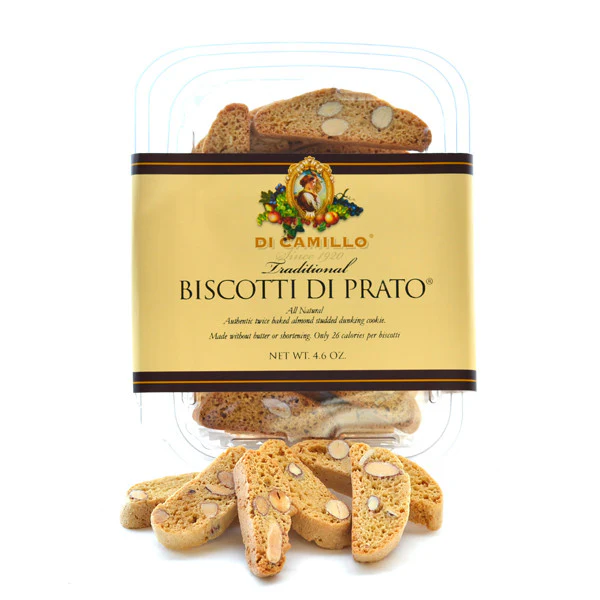
Foenegriek: The Ancient Herb with Modern Health Benefits and Culinary Versatility
October 19, 2025If you’ve ever savored a crunchy, nutty biscuit dipped in sweet wine or coffee, chances are you’ve encountered the delightful world of Italian biscotti. Among the most cherished varieties is “Бишкоти ди Прато,” also known as Biscotti di Prato or Cantucci. These twice-baked almond treats hail from the historic city of Prato in Tuscany, Italy, and represent a perfect blend of simplicity, tradition, and flavor. With their origins rooted in ancient baking practices, “Бишкоти ди Прато” have evolved into a symbol of Tuscan hospitality and culinary heritage.
In this comprehensive guide, we’ll explore everything you need to know about “Бишкоти ди Прато.” From their fascinating history to a step-by-step recipe, variations, and cultural significance, this article dives deep into why these biscuits continue to captivate food lovers worldwide. Whether you’re a baking enthusiast looking to recreate them at home or simply curious about Italian sweets, read on to discover the timeless appeal of “Бишкоти ди Прато.” Semantic SEO practices emphasize natural integration of related terms like Tuscan almond biscuits, Cantucci recipe, and Vin Santo pairing, ensuring this content is both informative and search-friendly.
The Rich History of Бишкоти ди Прато
The story of “Бишкоти ди Прато” begins in the heart of Tuscany, specifically in the city of Prato. The term “biscotti” itself comes from the Medieval Latin “biscoctus,” meaning “twice-cooked,” a method that dates back to Roman times when soldiers needed long-lasting provisions for their campaigns. These early twice-baked breads were dry and durable, ideal for travel and warfare.
By the Middle Ages, the practice had evolved in Italy, with Tuscany becoming a hub for refined versions. The addition of almonds, a key ingredient in “Бишкоти ди Прато,” is often linked to the Renaissance era, particularly during the influence of Catherine de’ Medici, who brought Italian culinary traditions to France. However, the modern form of these biscuits was truly defined in the 19th century by Antonio Mattei, a Prato pastry chef. Mattei rediscovered and perfected an ancient recipe, presenting it at the 1867 Exposition Universelle in Paris, where it earned special recognition.
Mattei’s bakery, Biscottificio Antonio Mattei, still operates today and is credited with standardizing the traditional recipe. Interestingly, while English speakers refer to them as biscotti, in Tuscany, they’re commonly called “cantucci” or “cantuccini,” derived from “cantuccio,” meaning a corner or crust of bread. This naming reflects their humble origins as ends of loaves baked extra crisp.
Over the centuries, “Бишкоти ди Прато” have spread beyond Italy, influencing similar treats in Catalonia (carquinyolis) and France (croquants). Their enduring popularity stems from their simplicity and versatility, making them a staple in Italian households and a favorite export. Food historians note that bakers in Prato’s almond groves were the first to incorporate local nuts, adding a nutty crunch that defines the biscuit. Today, these biscuits embody Tuscany’s agricultural bounty and baking artistry, with Prato proudly claiming them as a regional specialty.
Traditional Ingredients of Бишкоти ди Прато
What sets “Бишкоти ди Прато” apart is their minimalist ingredient list, adhering to Antonio Mattei’s original formula. The classic recipe avoids fats like butter or oil, relying instead on natural binding from eggs and sugar. Core components include:
- Flour: All-purpose flour forms the base, providing structure without overpowering the nuts.
- Sugar: Granulated sugar adds subtle sweetness, balancing the almonds’ earthiness.
- Eggs: Fresh eggs bind the dough and contribute to the golden color.
- Almonds: Whole, unroasted, and unskinned almonds are essential, offering crunch and flavor. Traditionally, these come from Prato’s groves.
- Pine Nuts: Occasionally included for a variant, adding a resinous note.
This fat-free composition results in a dry, crunchy texture perfect for dipping. No yeast, leavening agents, or artificial flavors are used, preserving the biscuits’ authenticity. Semantic variations like “Tuscan almond cantucci” highlight the nuts’ prominence, making these ingredients key to the biscuit’s identity.
For the best results, source high-quality almonds—preferably Italian varieties for that authentic taste. This simplicity not only honors tradition but also appeals to modern health-conscious bakers seeking low-fat treats.
Step-by-Step Recipe for Authentic Бишкоти ди Прато
Creating “Бишкоти ди Прато” at home is a rewarding endeavor that captures the essence of Tuscan baking. This recipe yields about 40 biscuits and takes around 1 hour, plus cooling time. Preheat your oven to 350°F (175°C).
Ingredients (for 40 biscuits):
- 2 cups (250g) all-purpose flour
- 1 cup (200g) granulated sugar
- 2 large eggs (plus 1 for egg wash)
- 1 cup (150g) whole almonds (unskinned)
- 1/2 teaspoon vanilla extract (optional, for a modern twist)
- Pinch of salt
Instructions:
- Prepare the Dough: In a large bowl, whisk together the flour, sugar, and salt. Make a well in the center and add the two eggs and vanilla (if using). Mix with a wooden spoon until a shaggy dough forms. Fold in the almonds, kneading gently on a floured surface until cohesive. The dough should be firm and slightly sticky—avoid overworking to keep the texture light.
- Shape the Logs: Divide the dough into two equal portions. Roll each into a log about 12 inches long and 2 inches wide. Place them on a parchment-lined baking sheet, spacing them apart. Flatten slightly to about 1-inch thickness. Brush with beaten egg for a shiny finish.
- First Bake: Bake for 25-30 minutes until golden and firm to the touch. Remove from the oven and let cool for 10 minutes. This step sets the structure before slicing.
- Slice and Second Bake: Using a serrated knife, cut the logs diagonally into 1/2-inch slices. Arrange the slices cut-side down on the baking sheet. Bake again for 10-15 minutes per side, flipping halfway, until dry and crisp. The second bake is crucial for that signature crunch—adjust time for desired hardness.
- Cool and Store: Let the biscuits cool completely on a wire rack. Store in an airtight container for up to a month; their dryness ensures longevity.
Tips: For even baking, rotate the sheet midway. If almonds pop out during slicing, gently press them back in. This recipe embodies semantic SEO terms like “homemade Cantucci di Prato” by focusing on traditional methods.
Variations and Modern Twists on Бишкоти ди Прато
While purists stick to the classic almond version, “Бишкоти ди Прато” inspire endless variations. Traditional alternatives include “Cantucci di pinoli,” swapping almonds for pine nuts. Modern bakers experiment with pistachios, hazelnuts, or dried fruits like cranberries for a fruity burst.
Chocolate-dipped ends add indulgence—melt dark chocolate and dip half the biscuit post-baking. For spiced versions, incorporate cinnamon or anise seeds, echoing regional Italian influences. Gluten-free adaptations use almond flour, while vegan recipes substitute eggs with flaxseed mixtures.
Internationally, Catalan carquinyolis feature sliced almonds, and French croquants add honey. These twists maintain the twice-baked essence but adapt to local tastes, broadening the appeal of “Бишкоти ди Прато” in global kitchens.
Cultural Significance and Perfect Pairings
In Tuscany, “Бишкоти ди Прато” are more than snacks—they’re cultural icons. Often sold alongside Prato’s bruttiboni (meringue-like cookies), they’re served after meals with a glass of Vin Santo, Tuscany’s sweet dessert wine. Dipping softens the crunch, creating a harmonious blend of flavors.
Their significance ties to festivals and family gatherings, symbolizing hospitality. In Prato, bakeries like Mattei’s preserve traditions, attracting tourists seeking authentic Tuscan experiences. Pair them with espresso for breakfast or tea for an afternoon treat; the versatility enhances their cultural role.
Globally, they’ve influenced desserts, appearing in ice cream or as coffee accompaniments, reinforcing Tuscany’s culinary legacy.
FAQs About Бишкоти ди Прато
What is the difference between biscotti and Бишкоти ди Прато? Biscotti is a general term for twice-baked cookies, while “Бишкоти ди Прато” specifically refers to the almond variety from Prato, Tuscany, also called Cantucci.
Can I make Бишкоти ди Прато without almonds? Traditionally, no—almonds are essential. However, variations use other nuts like pine nuts or pistachios.
How long do Бишкоти ди Прато last? Thanks to double-baking, they store well for up to a month in an airtight container, or longer if frozen.
Are Бишкоти ди Прато gluten-free? The classic recipe uses wheat flour, but gluten-free versions substitute with rice or almond flour.
What’s the best way to serve Бишкоти ди Прато? Dip them in Vin Santo wine, coffee, or tea to soften their texture and enhance flavors.
Final Words
“Бишкоти ди Прато” encapsulate the soul of Tuscan cuisine—simple, enduring, and utterly delicious. Whether enjoying them traditionally with Vin Santo or experimenting with modern twists, these biscuits offer a taste of Italy’s rich heritage. Next time you crave a crunchy treat, try baking your own and savor the history in every bite. For more on Italian sweets or recipes, explore Tuscany’s culinary wonders.

